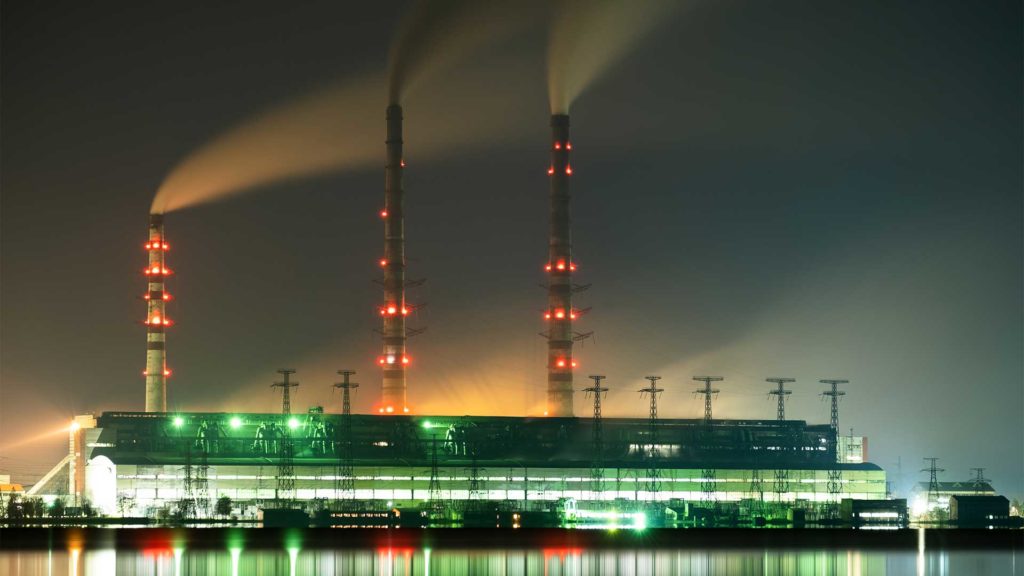
Mitchell also said the engineering team was working on delivering the world’s first carbon-negative potassium sulfate operation providing reagents for the boron solution mine, one of its many initiatives to give thrust to the decarbonization agenda, a top executive of the company has said. Mr. Mitchell went on to remark that with demand for clean energy and electrification growing manifold, boron’s demand would increase in parallel.
AMERICAN PACIFIC BORATES LTD: A BORON-LED DECARBONIZATION CONTENDER
ABR is positioning itself as “An Emerging Leader in Boron Advanced Materials and Specialty Products” at a time when the global economy is looking to adopt cleaner and more efficient technologies under the backdrop of climate change concerns.
ABR aims to be a globally significant producer of borates and sulphate of potash (SOP). ABR’s flagship asset is the 100%-owned Fort Cady Borate Mine located in the desert region of Southern California, US.
At full production, the company is set to become the third-largest producer of borates globally (~6% of the global market) and the US’s largest producer of SOP.
The demand for ABR’s borates and SOP is increasingly driven by ‘big picture’ trends of energy storage, energy efficiency, electric vehicles, urbanization and more recently food security, all of which are fundamentally driven by the decarbonization agenda now.
ABR’s boron-enhanced SOP is achieving enhanced yield results on tested crops and increased interest from market participants, while the continued focus on electrification and decarbonization is bringing increased attention to boron as a necessary input into the permanent magnet and battery production.
BORON: A LEADING CONTRIBUTOR TO GREEN-ENERGY
As the world has become increasingly conscious of climate change over the recent decades, it has begun looking at alternate, sustainable and importantly, greener sources of energy to fuel its requirements, alongside renewable sources including wind, water, and solar, alternate sources.
Boron is a metalloid, a chemical element with the atomic number 5. Found in nature as borax, or sodium tetraborate decahydrate (Na2B4O7·10H2O), it is found naturally on Earth throughout the world, including in seawater, soil, plants, and animals.
Boron is now what lithium was 10 years ago when it began to generate interest in Green Energy, with the major exception being there are a lot more uses for boron and a lot more high-performance uses likely to emerge over the coming years as new and exciting uses are found for boron across multiple sectors seeking green and sustainable energy.
Boron is also extremely rare with approximately 80% of the world’s supply being produced by two companies. In most instances boron is an irreplaceable ingredient in many products and technologies.
BORON AND DECARBONIZATION
Decarbonization, the process of reducing carbon emissions from fossil fuels such as coal or oil to reduce greenhouse gases to protect Earth’s climate and to mitigate climate change, is the key item on the collective agenda of developed and developing nations to safeguard the planet.
The transition to a low-carbon economy is inevitable. The human consumption value chain has put tremendous pressure on the Earth and contributed to greenhouse gas emissions. The loss is irreparable and going green is not a choice any longer.
Decarbonization is the only option left with individuals, communities, nations, and the global economies.
The push for increased decarbonization is being felt worldwide as investors pressure companies to take this issue seriously. The fossil fuel industry has also been feeling the heat from consumers demanding greener solutions.
Power plants need to reduce carbon emissions as part of a Decarbonization policy

While scientists concur in developing solutions to push decarbonization to manage the carbon cycle, reduce industrial emissions, reduce Carbon Dioxide emissions, and supply borate compound solutions that help manage harmful emission levels on the planet, policy-makers are pushing the agenda through policy implementations. Taking note of these changes, governments have been increasingly designing legislation to incentivize investments in clean energy technologies.
Amid all these, boron has emerged as a significant player during the last decade to give thrust to the decarbonization agenda. Boron can play a part by reducing harmful levels of carbon through reduction of emissions, enabling clean power, helping secure the food supply chain, and providing nutrients in diets for healthy living.
Owing to its ability to bind more strongly with Carbon Dioxide, Boron plays a key role in decarbonization. The process for capturing CO emissions is often referred to as “decarbonizing”.
Boron blended with coal or other fossil fuels reduces carbon density by absorbing carbon at high temperatures without releasing any emissions, thus, aiding climate control efforts. Secondly, it is non-toxic and eliminates concerns about acid rain since chemical reactions do not occur between soot particles and acid precipitation.
Boron-based products including Boric Acid, Sodium Tetraborate Decahydrate (Borax), and Disodium Dihydrogen Phosphate help reduce carbon dioxide levels in the atmosphere.
Boron is being increasingly used in various processes including high-pressure synthesis gas plants, coal-burning power plants, steel production furnaces, or off-gas treatment facilities, resulting in significant emission reductions without affecting either product quality or efficiency rates.
Apart from being a safer fuel option, Boron produces energy without pollution or releasing greenhouse gases, aiding lower operating costs and increasing production. Boron can be recycled indefinitely due to its inert properties and hence, an ideal choice as a key player in decarbonization.
ABR’S BORON-ENRICHED SOP PRODUCTS FOR FOOD SECURITY
Boron is currently the second-most-prevalent micronutrient sold in the US market, accounting for ~19% of the market due to its vital role in maintaining soil quality and crop yield.
Market analysts expect the US boron agricultural micronutrient market to grow at ~9% CAGR from 2017 to 2022.
Located only 230 km northeast of Los Angeles, ABR’s project is well-positioned to capitalize on the Californian market’s need for high-quality soil. Known as the ‘food basket’ of America, California provides more than two-thirds of the country’s fresh produce.
American Pacific Borates (ABR) has a well-positioned Site to Support Food security Needs in the USA

ABR’s boron-enriched SOP product (SOP+B) has had positive feedback from partners and customers owing to its differentiation.
Tests using SOP+B on broccoli have resulted in significant yield improvements. ABR foresees a robust SOP demand due to increased demand for the crops on which it is used, increasing scarcity of arable land, changing fertilizer uses, and water scarcity.
ABR is expecting to sell five key products (with sub-brands) — boric acid for industrial use, boric acid for agricultural use, SOP, SOP+B, and gypsum, respectively.
ABR will initially focus on the Californian agricultural market, producing boric acid (BA) and SOP for use in fertilizers. ABR’s Fort Cady borate mine will produce BA initially for the large North American specialty fertilizer market.
At ABR’s Fort Cady Borate Mine Project, SOP is a by-product of the production of HCl that is used in the solution mining process for boric acid. SOP is a high-value specialty fertilizer used where crops such as fruit and vegetables, cotton, tobacco, peanuts, and soybeans have a sensitivity to chlorides or in areas where there is minimal rainfall and the build-up of chlorides in the soil is problematic.
The global market of SOP around 7m tonnes per annum. China is the largest end market for global SOP production, and the country’s demand is mostly supplied by internal producers. The rest of the global market is 3.5 Mt. Approximately 1 Mt of the global demand comes from Europe, 300,000 tonnes from the US, 0.5 Mt from Latin America and Africa, and the remainder from other parts of the world.
The US SOP market has a volume of ~300kt, and the US is a net importer. SOP demand is focused in American states with significant production of high-value or chloride-sensitive specialty crops.
Currently, there is only one SOP producer in the US (Utah-based Compass Minerals). With North America depending on imports for specialty fertilizers, ABR hopes to fulfill the demand-supply gap in the region through its Fort Candy Mine Project.
US SOP consumption continues to grow at a strong annual rate. Industry analysts expect that SOP demand will double current annual rates by 2030.
With ABR’s production profile, and the sufficient increase in demand forecasted, ABR is well-poised to be a frontrunner supplier in the North American market.
As a key market for both BA and SOP, any increase in fertilizer demand, particularly in the USA, would be a positive for ABR that hopes to push the decarbonization agenda specifically through borates.
ABR’S SOLUTION FOR EV BATTERIES
With Neodymium Permanent Magnet (NdFeB permanent magnets), a key element of the drivetrain of an electric vehicle, demand soaring, boron’s requirement from the EV market too is expected to surge. EVs will be the key component of decarbonizing mobility globally.
ABR will Look to the High-growth Battery and Permanent Magnet Markets for Borate Production.

As a key focus for ABR going forward, the ‘green’ market for BA is an important extra leg of growth for ABR. As BA flows into the market for EV batteries and permanent magnets, increased demand for these products would be a positive development for ABR.
ABR AND DECARBONIZATION
The mining industry is one of the significant stakeholders in carbon footprint and greenhouse gas emissions. Being an energy-intensive sector, mining plays a significant role in climate change. The requirement of water for mining compounds the burden on the companies involved since they are putting more so much pressure on the Earth’s resources, while new explorations pose additional environmental risks.
While mining companies have long been criticized for their environmental impact, these large-scale operations are now in a race against time to cut greenhouse gas emissions before the international community adopts ambitious net zero emissions targets by 2050.
About a dozen Chinese coal mining firms have committed themselves to sustainability, promising to switch their production into clean energy by 2025, an action-driven by the country’s massive pollution problem and the need for sustainability.
Although mining provides raw materials for economies to function, the sector is plagued with high and often overlooked ecological costs that are yet to be addressed to meet global standards on climate change and sustainability goals such as The Paris Agreement.
Investors have put pressure on mining companies about their carbon emissions because they believe it will lead them towards more sustainable practices.
Sectoral experts have been suggesting that mining companies should invest in renewable technologies such as geothermal power plants, hydroelectric dams, hydropower stations, and wind turbines to meet their energy needs.
The time is ripe for mining companies to invest in R&D and innovation by funding new research into the best ways of decarbonizing their industries.
OPPORTUNITIES GALORE FOR ABR
Global demand for boric acid is currently much larger than that for lithium and (measured in tonnes of boric acid) is ~4.5Mtpa with 80% supply coming from Turkey (via state-owned Eti Maden) and California (mainly Rio Tinto’s Boron operations). It is extremely rare and in most cases an irreplaceable ingredient in so many products and technologies.
The current global reliance on a single borate supplier, Eti Maden, to continually meet increasing global demand opens significant opportunities for new suppliers such as ABR.
Although insulation and textile fiberglass are currently the largest users of borates, other uses in ceramics, glasses, cosmetics, detergents, wood treatment, and fire retardant chemicals and, importantly, as a micronutrient in fertilizers, is slated to give opportunities to ABR.
Food Security: Demand for Fertilizers Rich in Boron is Growing Exponentially

Further, with increased demand for boron in NdFeB permanent magnets used in EVs, wind turbines, all of which are an effort towards decarbonizing the Earth, opportunities for ABR are aplenty.
ABR is working on solar and geothermal initiatives that have the potential to redefine the production of specialty fertilizers and ABR’s broader integrated boron facility.
ESG considerations have become even more critical due to the widespread economic and social disruption caused by the COVID-19 pandemic. ESG initiatives supported by Credit Suisse gives a company like ABR the opportunity to present its uniqueness and rareness.





